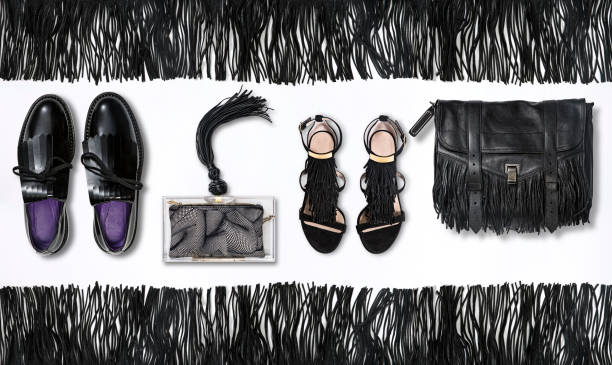How Economic Factors Shape Fashion Trends: From Prosperity to Practicality
Economic factors significantly shape fashion trends by influencing consumer spending, production costs, and market dynamics. During times of economic prosperity, fashion often becomes more extravagant, while economic downturns can foster a trend towards minimalism and practicality. This article delves into how various economic elements contribute to the ever-evolving landscape of fashion.
Consumer Spending Power

One of the most direct ways economic factors influence fashion trends is through consumer spending power. When the economy is strong, disposable income tends to increase, allowing consumers to spend more on luxury items and fashionable goods. This elevation in spending power typically encourages designers and brands to introduce more high-end, innovative collections to appeal to consumers’ desire for exclusivity and newness.
Conversely, during economic downturns, spending power diminishes as people tend to prioritize essential needs over luxury purchases. This shift forces fashion brands to adapt by creating more affordable, practical, and versatile clothing options. Retailers may increase discounts and promotions to attract cautious consumers, further emphasizing the trend towards economy-driven fashion.
Production Costs and Material Availability
Production costs are another crucial factor affected by the economy, influencing the fashion industry through the availability and price of materials. In a thriving economy, the cost of high-quality materials and labor might increase due to higher demand and increased wages, pushing brands to adjust their pricing strategies accordingly.
In times of economic struggle, there is often a push towards finding cost-effective materials and production methods. Brands might opt for synthetic fabrics over natural ones or move manufacturing to regions with lower labor costs to maintain profitability. This shift can lead to changes in fabric trends, designs, and overall aesthetics, often signalling an attempt to balance cost-efficiency with style.
Market Dynamics and Global Trade
Global trade policies and market dynamics significantly affect the fashion industry. High tariffs and trade restrictions during economic downturns can disrupt supply chains, making it harder for brands to access certain materials or engage in international collaborations. This restriction can lead to more domestically-produced fashion and a focus on local, sustainable resources.
In a booming economy, favorable trade policies and market liberalization typically make it easier for fashion brands to source diverse and exotic materials and inspirations. This openness often fosters international trends and cross-cultural designs, contributing to a richer, more varied fashion landscape.
Influence of Technology and Innovation
Economic health influences the extent to which fashion brands invest in technology and innovation. A robust economy often sees more investment in fashion tech like advanced textiles, smart fabrics, and sustainable production techniques. These technological advancements not only set new trends but also improve functionality and consumer appeal.
During weaker economic periods, brands may cut back on such investments, focusing instead on traditional methods and designs. However, economic crises can also drive innovation out of necessity, leading to the invention of cost-saving technologies or business models that might become trends in their own right.
Consumer Attitudes and Social Trends
The economy greatly influences consumer attitudes, which in turn, affect fashion trends. In prosperous times, consumers may exhibit a more carefree and experimental approach to fashion, indulging in bold styles and frequent wardrobe updates. Economic growth often correlates with a rise in ‘fast fashion’, where trends change rapidly, and consumers purchase more frequently.
Economic downturns usually bring about a shift towards sustainable fashion, with consumers seeking durable and adaptable clothing options. Eco-consciousness often gains prominence during these times as individuals look for ways to save money and make environmentally responsible choices, reinforcing the trend towards sustainability in fashion.
Conclusion
Economic factors exert a profound influence on fashion trends, shaping everything from consumer spending habits to production technologies and global trade dynamics. While economic prosperity can drive extravagance and rapid trend cycles, downturns often lead to practicality and sustainability in fashion choices. By understanding these economic influences, fashion brands can better anticipate and respond to changes in market preferences, ensuring their resilience and relevance in a fluctuating economic landscape.
FAQs
1. How do economic downturns affect fashion brands?
Economic downturns often lead fashion brands to prioritize affordability and practicality in their offerings. This can result in more discounts, the use of cheaper materials, and a focus on versatile and sustainable fashion solutions.
2. What role does consumer spending power play in fashion trends?
Consumer spending power directly affects how much individuals are willing to spend on fashion. A strong economy with high disposable incomes often leads to increased spending on luxury and high-end fashion, while economic struggles tend to favor affordable and practical fashion choices.
3. Can economic factors drive fashion innovation?
Yes, economic factors can either foster or hinder fashion innovation. Prosperous times often see more investment in fashion technologies and new materials, while economic crises can spur innovation out of necessity, leading to cost-saving measures and new business models.
4. How do trade policies impact the fashion industry?
Trade policies significantly affect the fashion industry by influencing the availability and cost of materials and production. Favorable policies can facilitate international collaborations and access to diverse materials, while restrictive policies might push brands toward domestic production.
5. Why does sustainable fashion gain popularity during economic downturns?
During economic downturns, consumers typically look for ways to save money and make responsible spending choices. This often includes purchasing durable and adaptable clothing, which aligns with the principles of sustainable fashion. The desire to reduce environmental impact also gains prominence, reinforcing the trend.
